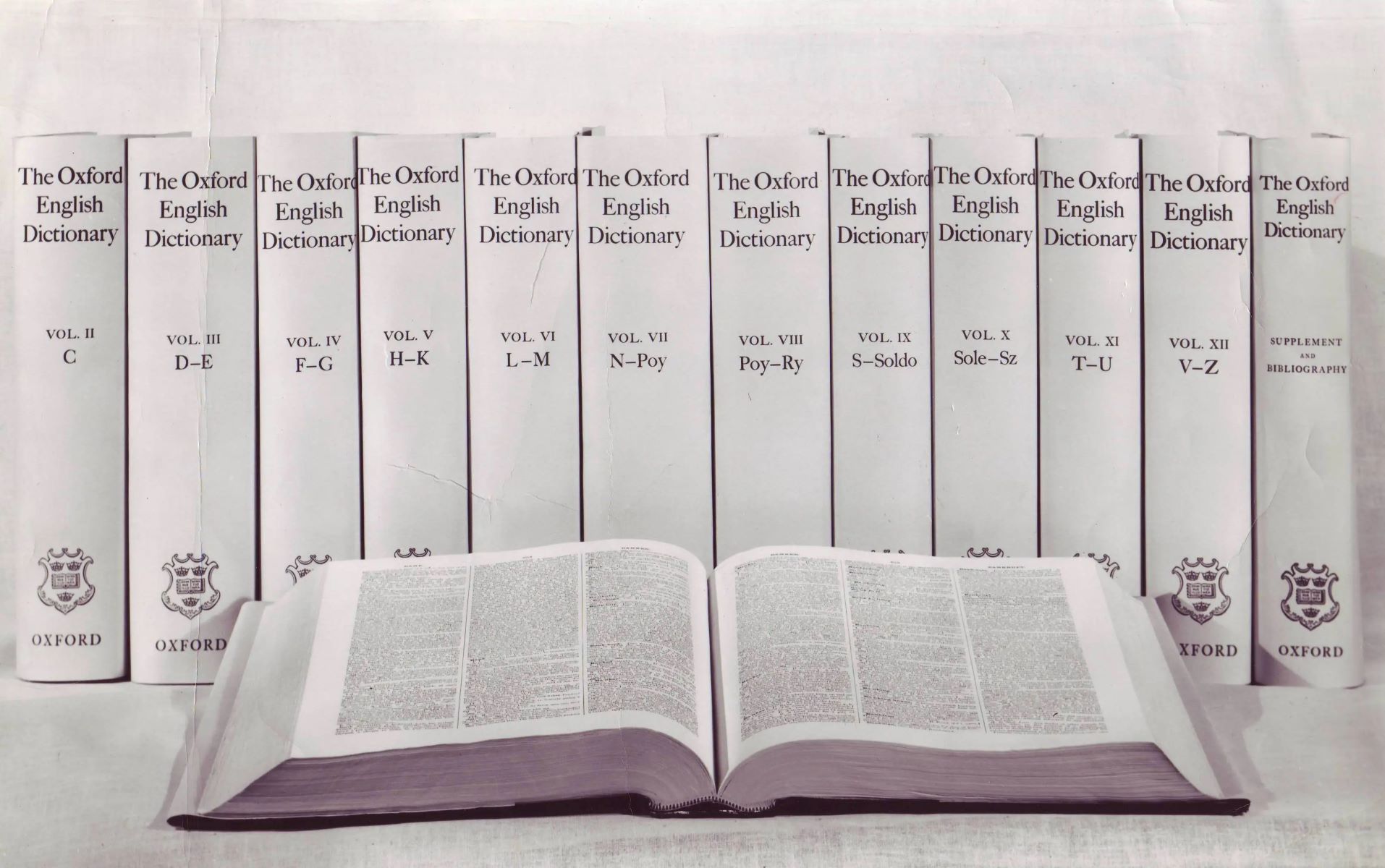Home>Language and Grammar>The Meaning And Usage Of Prepositions With Days: On, In, And At


Language and Grammar
The Meaning And Usage Of Prepositions With Days: On, In, And At
Published: January 21, 2024
Learn the correct usage of prepositions with days—on, in, and at—in this comprehensive guide to improve your language and grammar skills. Discover the meaning and nuances of these prepositions.
(Many of the links in this article redirect to a specific reviewed product. Your purchase of these products through affiliate links helps to generate commission for Regretless.com, at no extra cost. Learn more)
Table of Contents
Introduction
Prepositions are small words that often go unnoticed, yet they play a crucial role in our language. Among the most commonly used prepositions are "on," "in," and "at." These seemingly simple words hold the power to convey specific meanings and nuances, especially when used in relation to time expressions such as days of the week.
Understanding the correct usage of prepositions with days is essential for effective communication. Whether you are scheduling a meeting, making plans for the weekend, or simply discussing past events, knowing when to use "on," "in," or "at" can make a significant difference in how your message is perceived.
In this article, we will delve into the meanings and usage of the prepositions "on," "in," and "at" when referring to days. By exploring their distinct applications, you will gain a deeper understanding of how these prepositions function within the context of time expressions. Furthermore, we will uncover common phrases and idioms that incorporate these prepositions, providing you with practical examples of their usage in everyday language.
Join us on this linguistic journey as we unravel the intricacies of prepositions and discover how these small yet mighty words shape our expressions of time and events.
Read more: The Meaning And Usage Of ‘Wa Iyyakum’
Understanding the Prepositions "On," "In," and "At"
Prepositions are integral components of language, providing context and clarity to our expressions. When it comes to denoting time, the prepositions "on," "in," and "at" serve distinct purposes, delineating specific temporal relationships. Understanding their nuances is pivotal for effective communication and precise time referencing.
The preposition "on" is employed to pinpoint particular days within the calendar. For instance, "on Monday" signifies a specific day of the week. This usage conveys a sense of exactness and specificity, anchoring events to a particular day. "On" serves as a linguistic bridge, connecting our narratives to the temporal framework of the week.
Conversely, "in" is utilized to denote a broader temporal scope. When we say "in July," we encompass the entire duration of the month, encapsulating events and occurrences within that temporal expanse. "In" conveys a sense of immersion within a timeframe, encompassing the entirety of the designated period.
Furthermore, the preposition "at" is employed to pinpoint specific points within time. For instance, "at noon" designates a precise moment within the day, emphasizing punctuality and exact temporal placement. "At" serves to pinpoint specific junctures within the temporal continuum, adding precision to time-related expressions.
In essence, "on," "in," and "at" each fulfill specific temporal roles, delineating days, durations, and precise moments, respectively. Understanding their distinct applications is paramount for expressing temporal relationships with clarity and precision.
By comprehending the nuanced functions of these prepositions, we can articulate time-related concepts with finesse and accuracy, enriching our expressions with temporal depth and specificity. As we navigate the intricacies of time and events, these prepositions stand as invaluable tools, guiding our linguistic journey through the temporal tapestry of language.
Usage of "On" with Days
The preposition "on" is intricately woven into our expressions of time, particularly when denoting specific days within the calendar. When we say "on Monday," "on Tuesday," or any other day of the week, the preposition "on" serves as a linguistic anchor, tethering events and occurrences to precise moments within the temporal framework. This usage imparts a sense of exactness and specificity, allowing us to pinpoint and emphasize particular days with clarity and precision.
The application of "on" extends beyond singular days and seamlessly integrates with recurring events and special occasions. For instance, "on Sundays" signifies a regular recurrence, encapsulating the temporal essence of each individual Sunday. Similarly, "on Christmas Day" and "on New Year's Eve" denote specific calendar dates that hold cultural, traditional, and celebratory significance. These instances showcase the versatility of "on" in encapsulating both routine and exceptional temporal occurrences.
Moreover, the preposition "on" aligns with temporal references to upcoming events and appointments. When we schedule a meeting "on Friday" or plan an outing "on the weekend," we are employing "on" to designate specific points within the temporal continuum. This usage not only conveys temporal precision but also orchestrates our engagements within the broader context of the week, fostering a seamless temporal coherence.
In essence, the preposition "on" serves as a linguistic beacon, illuminating specific days and temporal junctures within the calendar. Its precise and definitive nature enables us to articulate temporal relationships with clarity, ensuring that our expressions of time are firmly anchored within the temporal tapestry of language.
As we navigate the temporal landscape, the preposition "on" stands as a steadfast guide, facilitating our articulation of temporal concepts with finesse and precision. Whether delineating routine occurrences, special occasions, or future engagements, "on" seamlessly integrates with our temporal narratives, enriching our expressions with temporal depth and exactitude.
Usage of "In" with Days
The preposition "in" assumes a pivotal role in our temporal expressions, particularly when referencing broader temporal scopes such as months and seasons. Unlike the precise anchoring provided by "on," the usage of "in" conveys a sense of immersion within a temporal expanse, encapsulating events and occurrences within the entirety of the designated period.
When we employ "in" with days, it extends beyond the specificity of individual days, encompassing entire months and seasons. For instance, when we say "in January," we evoke a sense of the entire month, enveloping events, experiences, and occurrences within the temporal expanse of January. This usage extends to seasons as well, as we express "in summer" or "in winter," invoking the immersive essence of the entire seasonal duration.
Furthermore, the preposition "in" seamlessly integrates with temporal references to recurring events and broader timeframes. For example, when we plan a vacation "in May" or schedule a project deadline "in the first quarter," the usage of "in" denotes a comprehensive temporal scope, aligning our engagements with the broader temporal continuum.
Moreover, the application of "in" extends to cultural and festive temporal references. When we celebrate holidays "in December" or anticipate festivals "in the fall," the usage of "in" captures the encompassing essence of these temporal junctures, transcending individual days to embrace the entirety of the temporal period.
In essence, the preposition "in" serves as a gateway to temporal immersion, allowing us to encapsulate events within broader temporal contexts. Its expansive nature enriches our temporal expressions, enabling us to evoke the encompassing essence of months, seasons, and recurring timeframes.
As we navigate the temporal tapestry of language, the preposition "in" stands as a conduit to temporal immersion, infusing our expressions with the encompassing essence of broader temporal scopes. Whether encapsulating months, seasons, or recurring events, "in" facilitates our articulation of temporal concepts with depth and inclusivity.
Usage of "At" with Days
The preposition "at" plays a distinctive role in our temporal expressions, particularly when pinpointing specific points within the temporal continuum. Unlike the broader temporal scopes encompassed by "in" or the exactness denoted by "on," the usage of "at" emphasizes precise temporal moments, adding a layer of punctuality and specificity to our temporal references.
When we employ "at" with days, it serves to designate specific junctures within the temporal framework. For instance, when we schedule a meeting "at 3 o'clock on Monday" or plan a gathering "at noon on Friday," the usage of "at" accentuates the exact temporal placement of these events. This precision is essential for coordinating engagements and ensuring temporal coherence within our schedules and plans.
Furthermore, "at" seamlessly integrates with temporal references to specific times of the day. When we denote activities such as "at sunrise," "at sunset," or "at midnight," the usage of "at" underscores the exact moments within the day, capturing the transitions and nuances of temporal progression. This precision allows us to articulate temporal concepts with finesse, enriching our expressions with vivid temporal imagery.
Moreover, the application of "at" extends to cultural and ceremonial temporal references. For example, when we observe traditions "at dawn on Easter Sunday" or commemorate events "at midnight on New Year's Eve," the usage of "at" accentuates the ceremonial and symbolic significance of these temporal junctures. This conveys a sense of reverence and punctuality, underscoring the importance of these specific moments within the temporal continuum.
In essence, the preposition "at" serves as a beacon of temporal precision, enabling us to pinpoint specific moments within the temporal tapestry of language. Its emphasis on exactness and punctuality enriches our temporal expressions, allowing us to articulate temporal concepts with clarity and vividness.
As we navigate the temporal landscape, the preposition "at" stands as a steadfast guide, facilitating our articulation of temporal concepts with finesse and precision. Whether denoting specific moments within the day or highlighting ceremonial temporal references, "at" infuses our expressions with temporal depth and exactitude, enhancing the richness of our temporal narratives.
Read more: The Meaning And Usage Of “Pinch The Loaf”
Common Phrases and Idioms with Days and Prepositions
Language is replete with idiomatic expressions that intricately weave prepositions and days into colorful phrases, imbuing our conversations with vivid imagery and cultural nuances. These idioms and phrases not only enrich our linguistic repertoire but also offer insights into the cultural and temporal significance associated with specific days and temporal references.
-
On Cloud Nine: This idiom, employing the preposition "on," denotes a state of extreme happiness or euphoria. It encapsulates the emotional essence of a moment, transcending temporal references to evoke a profound sense of joy and elation.
-
In the Nick of Time: The usage of "in" in this idiomatic expression conveys a sense of urgency and precision, encapsulating the notion of arriving at a specific moment with perfect timing. It underscores the significance of temporal punctuality and the impact of timely actions.
-
At the Eleventh Hour: This idiomatic phrase, incorporating the preposition "at," signifies a last-minute occurrence or action. It emphasizes the exactness of a specific temporal juncture, highlighting the dramatic tension associated with imminent deadlines or pivotal moments.
-
On a Rainy Day: The usage of "on" in this idiomatic expression evokes a sense of melancholy or introspection, capturing the mood and ambiance associated with rainy days. It transcends temporal references to evoke emotional and atmospheric nuances linked to specific days and weather conditions.
-
In the Long Run: This idiomatic phrase, employing the preposition "in," denotes a broader temporal perspective, encompassing extended durations and overarching outcomes. It emphasizes the temporal expanse and enduring implications of actions and decisions in the grand scheme of time.
-
At the Crack of Dawn: The usage of "at" in this idiom accentuates the exact moment of daybreak, evoking the imagery of the first light of dawn. It underscores the precision and vividness of temporal references, capturing the transitional beauty of early morning moments.
These idiomatic expressions and phrases showcase the diverse ways in which prepositions and days intertwine to convey nuanced meanings and cultural connotations. By delving into these idioms, we gain a deeper appreciation for the intricate interplay of language, time, and cultural symbolism within our expressions.
As we navigate the rich tapestry of idiomatic language, we uncover the profound ways in which prepositions and days infuse our conversations with depth, imagery, and cultural significance. These idiomatic expressions serve as windows into the intricate relationship between language and temporal experiences, enriching our linguistic expressions with vivid temporal nuances and cultural resonance.
Conclusion
In conclusion, the prepositions "on," "in," and "at" intricately shape our expressions of time, adding depth, precision, and cultural significance to our temporal references. Through their nuanced usage, these prepositions serve as linguistic anchors, tethering our narratives to specific days, broader temporal scopes, and precise moments within the temporal continuum.
The usage of "on" allows us to pinpoint specific days with exactness and clarity, whether denoting routine occurrences, special occasions, or future engagements. Its definitive nature illuminates temporal junctures, fostering a sense of temporal coherence within our narratives. Conversely, "in" enables us to immerse events within broader temporal contexts, encompassing months, seasons, and recurring timeframes. This expansive usage enriches our expressions, evoking the encompassing essence of temporal expanse. Furthermore, "at" emphasizes precise temporal moments, adding a layer of punctuality and specificity to our temporal references. Its focus on exactness and punctuality enriches our expressions, allowing us to articulate temporal concepts with clarity and vividness.
Moreover, the idiomatic expressions and phrases featuring these prepositions and days offer insights into the cultural and emotional nuances associated with specific temporal references. They serve as windows into the intricate relationship between language, time, and cultural symbolism, enriching our linguistic expressions with vivid temporal nuances and cultural resonance.
As we navigate the rich tapestry of idiomatic language and delve into the nuanced usage of prepositions with days, we gain a deeper appreciation for the profound ways in which language, time, and cultural experiences intertwine within our expressions. By understanding the distinct roles of "on," "in," and "at" in temporal references, we can articulate temporal concepts with finesse, precision, and cultural resonance, enriching our linguistic repertoire and enhancing our communication of temporal experiences.














